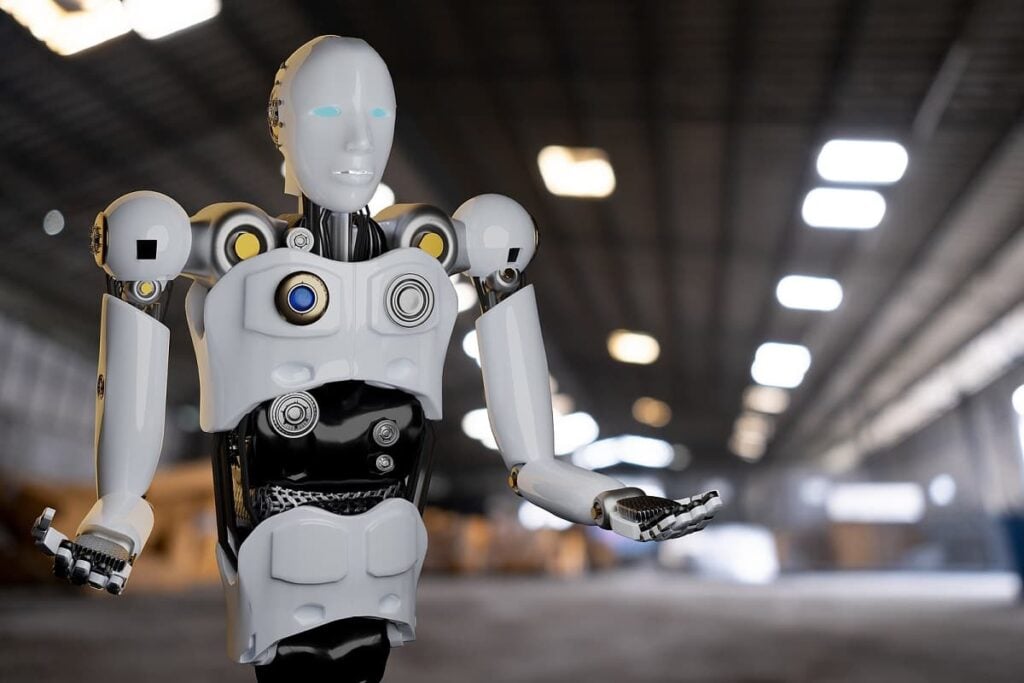Will Rethink Robotics Become a Future Robot Stock?
Table of contents
Table of contents

One of the most pervasive elements of science fiction is the portrayal of humanoid robots which can interact seamlessly with humans around them. This “humanoid” element is critical in allowing robots to be seen not as a threat, but as an equal. People have to feel comfortable around robots or they will be unlikely to collaborate. This very same notion extends to robotics used in industrial automation. Just this past summer, we saw the high profile case of a robot killing a human worker at a Volkswagen plant which again raised questions about the safety of robots that work alongside humans. These concerns are amplified by industrial workers who also fear that robots are taking over their livelihoods as well. One company called Rethink Robotics is looking to “humanize” robots in an effort to alleviate both safety concerns and “they took our jobs” concerns.
About Rethink Robotics
Founded in 2008, Rethink Robotics has taken in $113.5 million in funding so far from the likes of Jeff Bezos, Goldman Sachs, Draper Fisher Jurvetson, Charles River Ventures, and General Electric. The founder of Rethink Robotics is Rodney Brooks, a past Professor of Robotics at MIT who also co-founded iRobot (NASDAQ:IRBT). The Company’s robots are presently being used across a wide variety of industries and applications including textiles, injection molding, steel, ceramics, plastics, and wood shaping. Rethink Robotics has established distribution channels around the globe and just last month, announced that Shanghai Electric will begin distributing their robots to Chinese manufacturers.
Update 10/06/2018: Rethink Robotics has shut down following a failed acquisition attempt. According to a statement they released, the company didn’t achieve the expected commercial success because mainly, the market wasn’t ready for their innovations yet.
Rethink Robotics is bringing robotic automation to manufacturers who would otherwise not be able to afford it by creating a “robot operating system” that can be taught how to work as opposed to having a team of software engineers configure every element of the robot’s behavior. While traditional robots typically take an average of 200 hours to program and deploy, Rethink’s robots can be deployed in under two hours and can easily be trained by typical factory technicians – not robotics engineers.
Rethink Robotics has developed two robots so far; Baxter and Sawyer. Baxter ($25,000), is the world’s first low-cost industrial humanoid robot which was introduced in 2012. With two arms, Baxter is suited for bulkier tasks like loading boxes.
The second robot, Sawyer ($29,000), was unveiled in March of this year and is meant to perform precise tasks that robots previously haven’t been capable of. Weighing just 42 pounds, Sawyer has a single arm which is capable of 7 degrees of freedom along with two cameras that enable pinpoint accuracy allowing the robot to “see”. Sawyer is currently being tested by General Electric alongside humans to assemble light fixtures in a true demonstration of “human robot” collaboration. Both robots are able to express themselves by making several facial expressions, for example, their digital faces can show what they are focused on, and can even express confusion when something isn’t right. The robots also have sensors allowing them to sense when people are nearby. As the below picture suggests, everyone gets along and nobody feels threatened.
Conclusion
At first look, Rethink Robotics appears to be just trying to market their robots as humanoid by simply slapping on a screen with a pair of eyes and by using feel-good terms like “an easily adoptable alternative to off-shoring” or “safe to work next to without cages”. However, the technology they have created is actually able to automate the 90 percent of tasks that until now, have been beyond the reach of traditional automation. If this is in fact the case, then the “feel good” element is crucial in order to avoid the inevitable backlash that will arise when 10s of thousands of jobs are displaced by technology – again. As we’ve learned from the past, this is not necessarily a bad thing in the long run.
With Rethink Robotics having released their second robot this year, they are well beyond “proof of concept” and an IPO might provide them with the capital infusion necessary to scale production for their robots.
Sign up to our newsletter to get more of our great research delivered straight to your inbox!
Nanalyze Weekly includes useful insights written by our team of underpaid MBAs, research on new disruptive technology stocks flying under the radar, and summaries of our recent research. Always 100% free.

















